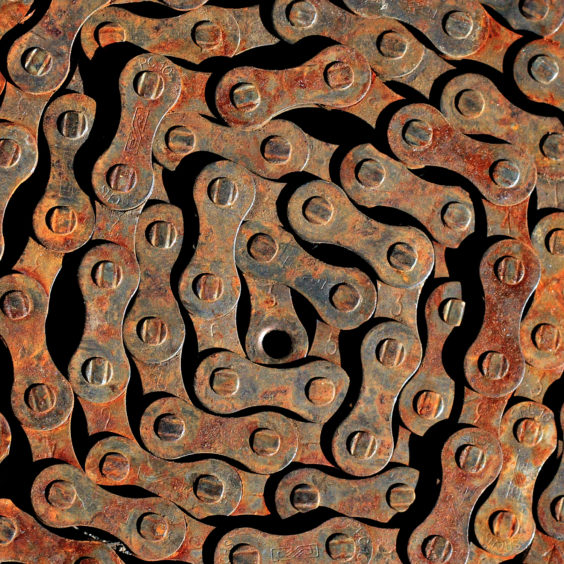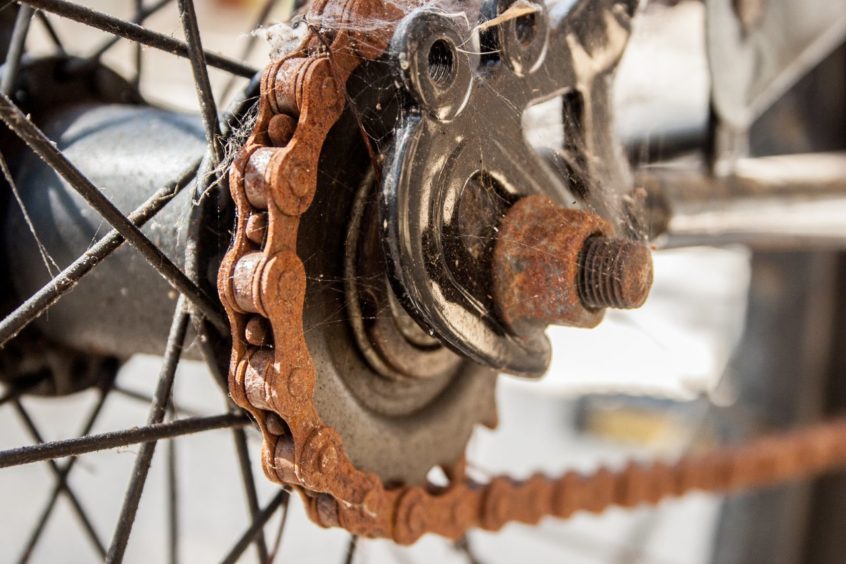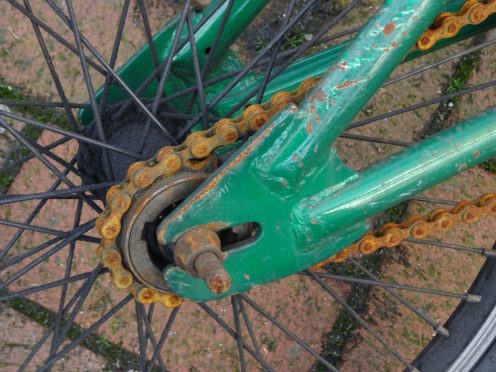Bicycle chains, or bush roller chains to give them their full working title, are a fundamental part of most bikes.
Swiss engineer Hans Renold moved to and found work in Manchester in 1873 with a firm of machinery exporters. In 1879 he purchased a textile-chain business in Salford and in 1880 invented and patented the bush roller chain that by 1886 was to transform bicycles.
Like many inventions, if it isn’t broken, then don’t fix it and the bicycle chains of today still use that Victorian technology and would be still very much recognisable to Hans Renold.
Despite other challengers, such as “String Drive” and “Treadle Drive” the only other serious challenge to the bicycle chain’s dominance has been the “Belt Drive”. Belt drives are quieter, don’t need oiling, cleaner and are more durable. However, roller chains can be split and rejoined, work with derailleur gearing, thus avoiding more expensive and often heavier hub-gearing and they are often cheaper.

So it looks like the Bush Roller Chain is here to stay for at least a while longer, so how do we ensure that we are looking after it? I often cringe when I see chains that are rusted and dirty – it amazes me that some people will spend inordinate amounts on a state-of-the-art, lightweight bike, but then neglect the transmission that turns the power from your legs into forward momentum on the bike.
Neglecting this important part of your bike at your peril. Dirt on your chain will lead to reduced efficiency and cause premature wearing on other more expensive parts of your bike, such as the gearing sprockets and front chain-rings.
Over time, dirt works its way inside the chain to wear away the inside of the bushes and pins leading to chain stretch. As this happens your chain won’t sit properly on the gearing teeth and the chain will get noisier and start to skip over the gears, ultimately leading to the wear of the components mentioned above.
One mistake that I often see is people over lubricating their chains and worse still, lubricating an already dirty chain as this attracts more dirt and abrasive particles into the chain. You can often spot the culprits of this error by the “cyclist’s tattoo” they will be sporting on the calf of their right leg, caused by their leg touching the front chain-ring when standing astride their bike and leaving a clear imprint for all to see. Lubricating the outside of the chain can also increase the amount of dirt attracted to the chain as the outfacing plates become stickier, so running the lube along the inside of the chain, then wiping off any excess is a better course of action.

So, after all that preaching, you would think that I should know better, but last week it mortified me to take a bike out of my shed and find the chain orange with several links seized. I remembered putting the bike away wet, late one night, promising myself that I would get up the next day, wash the bike down and re-lube the chain.
Only I forgot, and this mess of a bike was now the result. If I had seen anyone else bike like that, I would have been standing over it shaking my head and tutting disapprovingly, but here I was, with my infallibility in shreds like a tattered flag blowing in the wind.
In fact, it was in such a state that I had to take the chain off and replace the whole thing. I hold my head in shame and can only derive some penance from publicly proclaiming my wrong-doing, I can only promise you it will never happen again.
Where to ride: Indoors
Description:Normally in this section I would be telling you about a favourite route, or recommending an event to enter. Current Government advice, at the time of writing, is the you can still take exercise out of doors on your bike, so exploring local routes may be an option. But for many, riding indoors may be the only choice. If that is the case, then it is worth exploring some of the indoor virtual cycling worlds and programmes available such as: Zwift, Trainer Road, Sufferfest and so on. You don’t always need expensive Smart Trainers to use them either, so get online, find out more and keep pedalling.










